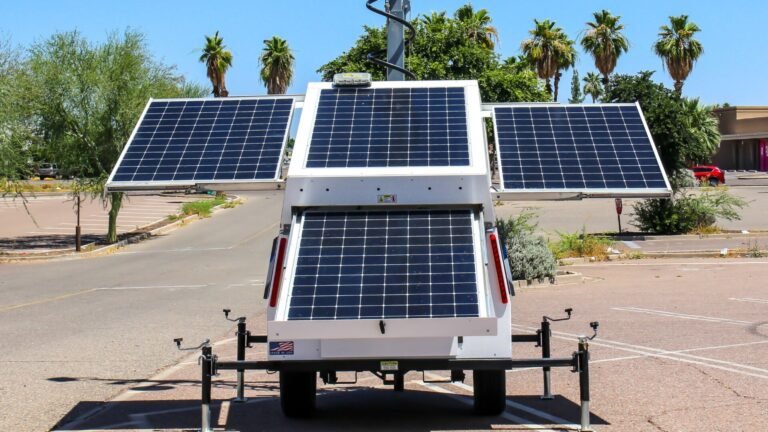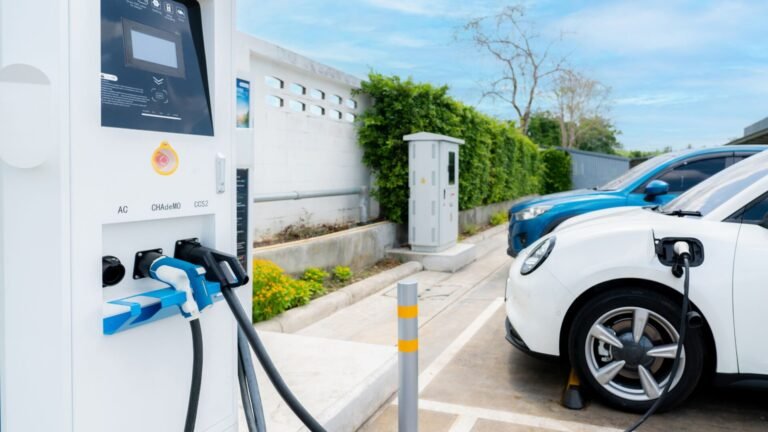As the world moves towards sustainable energy solutions, European airports are leading the way by harnessing solar energy.
This innovative approach not only reduces carbon emissions but also offers a plethora of benefits to the aviation industry.
In this blog, we will delve into the five key benefits of harnessing solar energy for European airports, emphasizing why this transition is crucial for the future of air travel.
1. Reduction in Carbon Footprint
One of the most significant benefits of harnessing solar energy for European airports is the substantial reduction in carbon footprint.
Traditional energy sources, such as fossil fuels, contribute significantly to greenhouse gas emissions. By switching to solar energy, airports can drastically cut down on these emissions. Solar panels convert sunlight directly into electricity without producing any greenhouse gases.
This clean energy source helps airports contribute to national and global carbon reduction goals, making the aviation industry more sustainable.
2. Cost Savings on Energy Bills
Harnessing solar energy can lead to considerable cost savings on energy bills for European airports. Airports consume vast amounts of energy to power lighting, HVAC systems, and various other operations.
Solar energy provides a cost-effective alternative, as it allows airports to generate their own electricity and reduce their dependency on the grid.
Over time, the savings on energy bills can be substantial, freeing up funds for other critical infrastructure improvements and services. The initial investment in solar panels is offset by the long-term savings, making it a financially sound decision.
3. Energy Security and Reliability
European airports can enhance their energy security and reliability by harnessing solar energy. Solar power systems can be designed with battery storage solutions, ensuring a continuous supply of electricity even during power outages.
This is particularly important for airports, where uninterrupted operations are crucial for safety and efficiency. By generating their own power, airports become less vulnerable to external energy supply disruptions, ensuring a reliable and secure energy source.
This reliability is vital for maintaining operational continuity and passenger satisfaction.
4. Enhanced Public Image and Stakeholder Trust
Adopting solar energy solutions enhances the public image of European airports and builds stakeholder trust. In an era where environmental responsibility is increasingly important, airports that invest in renewable energy projects demonstrate their commitment to sustainability.
This proactive approach can improve the airport’s reputation among passengers, airlines, and regulatory bodies. Additionally, it can attract environmentally conscious travelers and businesses, boosting the airport’s appeal and competitiveness.
Positive public perception can lead to increased patronage and support from the community.
5. Compliance with Environmental Regulations
Harnessing solar energy helps European airports comply with stringent environmental regulations. Governments across Europe are implementing policies to reduce carbon emissions and promote renewable energy.
Airports that adopt solar energy solutions not only align with these regulations but also position themselves as industry leaders in sustainability.
Compliance with environmental standards can prevent potential fines and sanctions, ensuring smooth operational continuity. Furthermore, it positions airports to take advantage of government incentives and grants aimed at promoting renewable energy adoption.
Case Studies: Successful Solar Energy Implementations
Several European airports have already begun to harness solar energy, showcasing the tangible benefits of this transition. For instance, Munich Airport in Germany has installed a large solar power plant that generates significant amounts of electricity, reducing the airport’s carbon footprint and energy costs.
Similarly, Geneva Airport in Switzerland has integrated solar panels into its infrastructure, enhancing energy security and public image.
These case studies highlight the practical advantages of harnessing solar energy and serve as a blueprint for other airports considering similar initiatives.
The success of these projects underscores the feasibility and benefits of solar energy adoption in the aviation sector.
Future Prospects and Technological Advancements
The future of harnessing solar energy in European airports looks promising, with ongoing technological advancements making solar panels more efficient and affordable. Innovations such as thin-film solar cells and bifacial panels are increasing the efficiency of solar energy systems, enabling airports to generate more power from the same surface area.
Additionally, advancements in energy storage technologies are ensuring that solar power can be harnessed even during cloudy days and nighttime, providing a consistent energy supply.
European airports are also exploring the integration of solar energy with other renewable energy sources, such as wind and geothermal power, to create a comprehensive and resilient energy system.
This multi-faceted approach ensures that airports can maximize their renewable energy potential and further reduce their reliance on fossil fuels.
Conclusion
Harnessing solar energy is a transformative step for European airports, offering numerous benefits that extend beyond environmental sustainability.
By reducing carbon footprints, cutting energy costs, enhancing energy security, improving public image, and ensuring regulatory compliance, solar energy paves the way for a greener and more efficient aviation industry.
As technological advancements continue to drive down costs and improve efficiency, the adoption of solar energy solutions in European airports is set to increase, leading to a more sustainable future for air travel.
Companies like Tamesol are at the forefront of this green revolution, providing high-quality solar panels and renewable energy solutions that make it easier for airports to transition to sustainable energy sources.
Tamesol’s commitment to innovation and sustainability supports airports in their quest to harness solar energy, ensuring they benefit from cutting-edge technology and reliable, eco-friendly power solutions.
By partnering with Tamesol, European airports can confidently step into a future where sustainability and operational efficiency go hand in hand, shaping a more environmentally responsible aviation industry.






